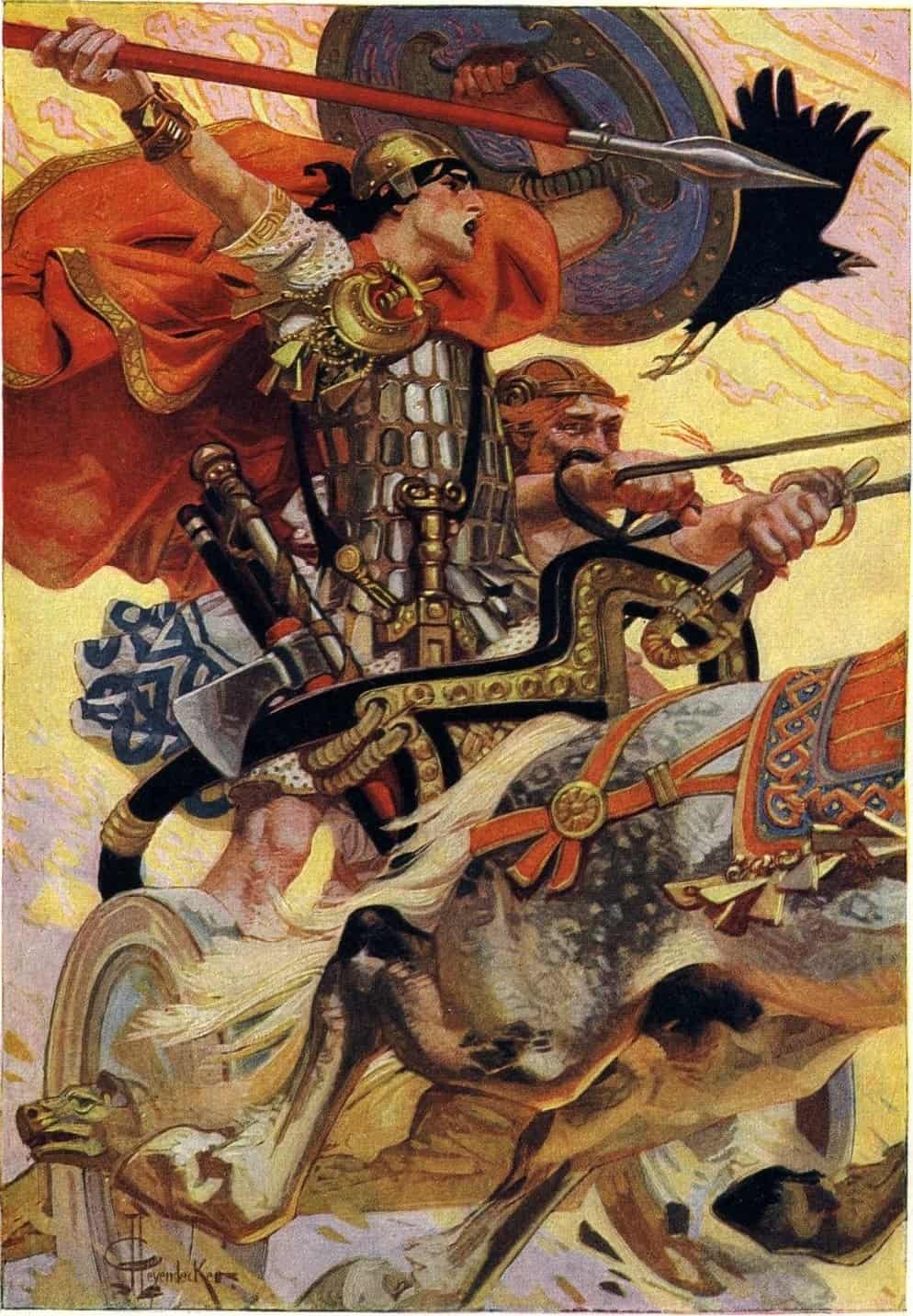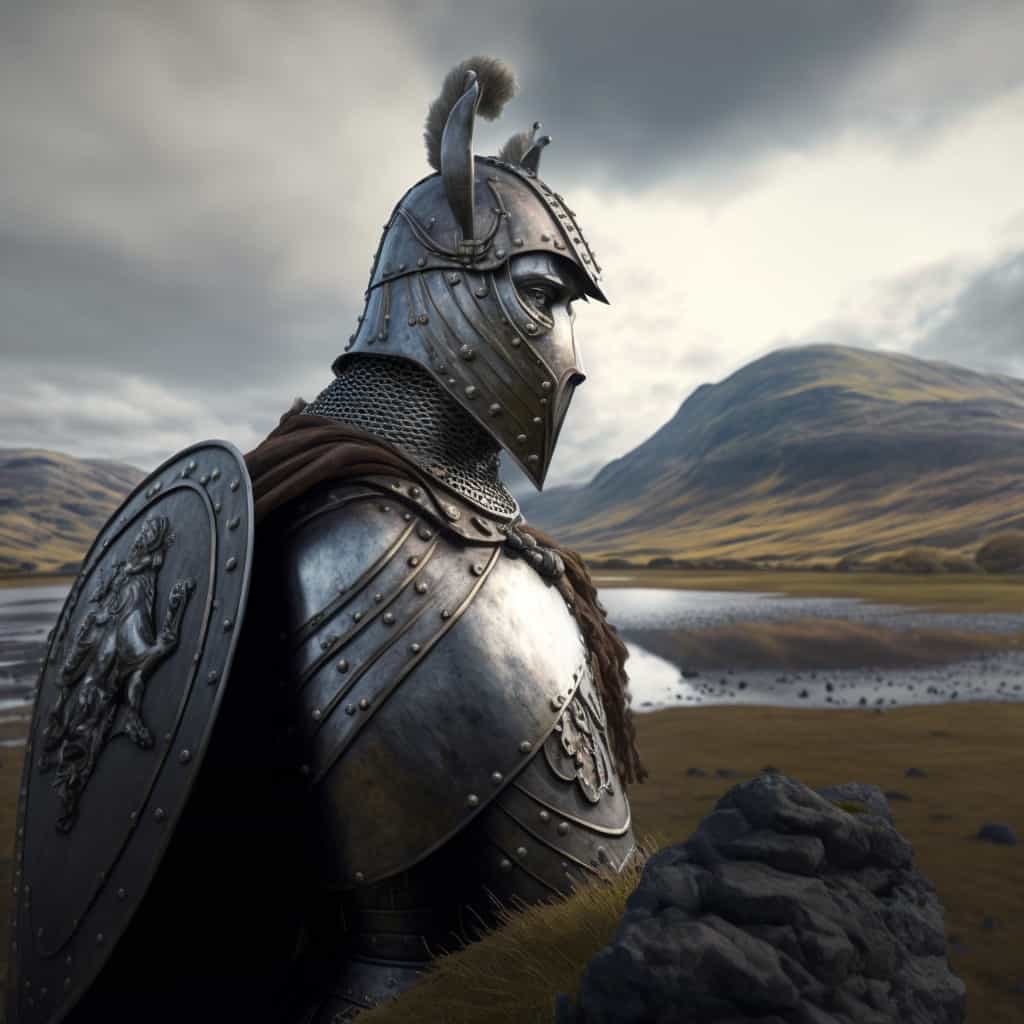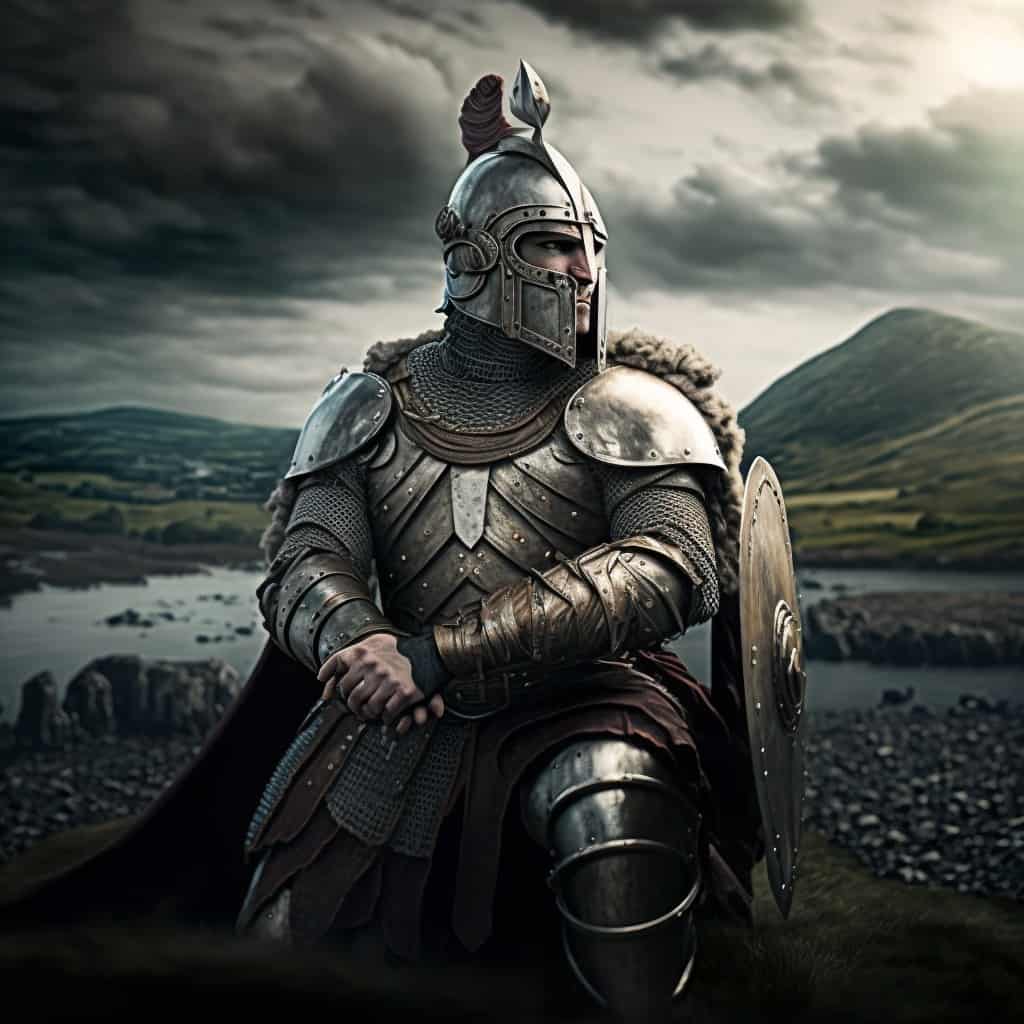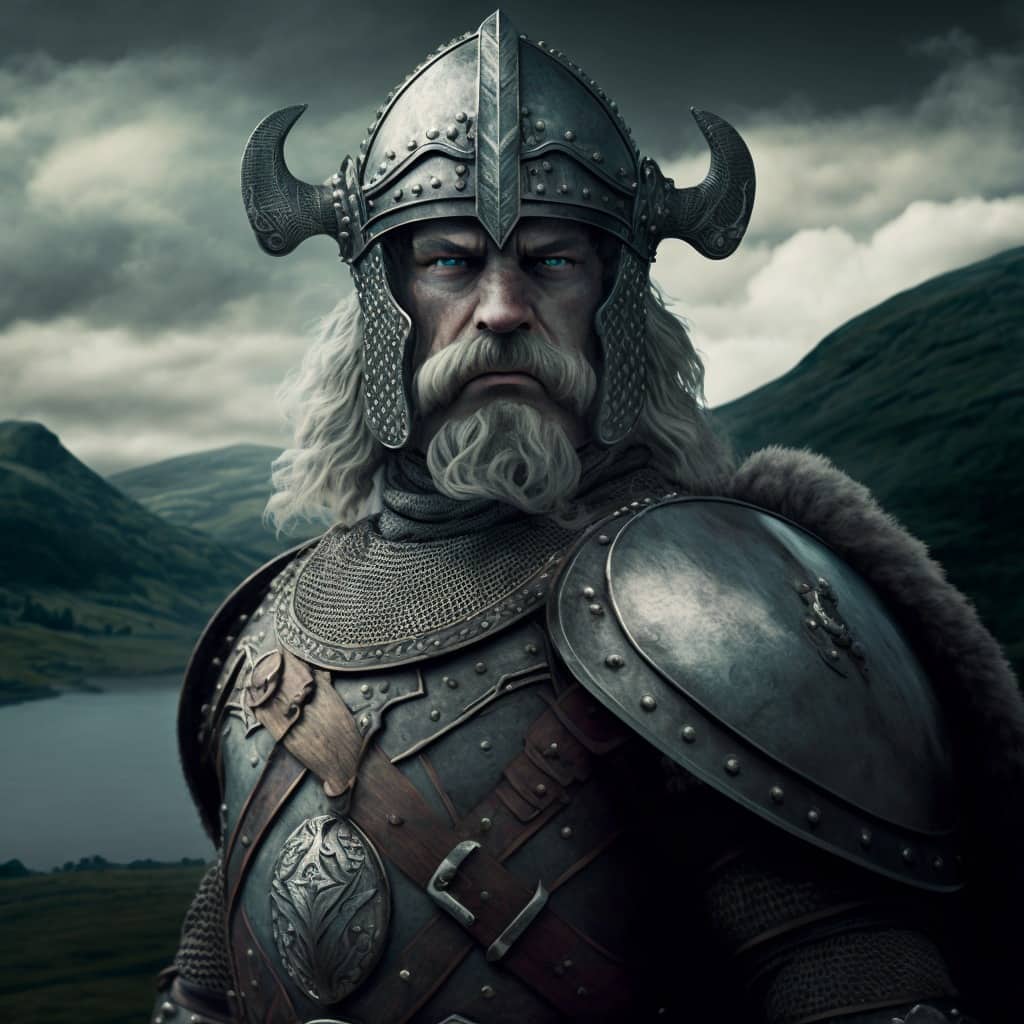There are plenty of mythologies out there that deserve a lot more recognition simply due to how interesting they really are.
The problem with this though is that while most people know all about the Norse and Greek mythology for example, very few people actually take the time to explore some of the lesser popular mythos around, such as the African and Irish legends of the past.
While often times overlooked, these two mythologies definitely deserve their very own spotlight due to how fascinating they really are.
So, in order to get people better accustomed to the Irish mythos, we decided to bring you a short guide on one of our favorite stories there is, aka the story of one of the greatest heroes that Irish mythology has to offer.
We are talking about none other than Cuchulainn (or alternatively Cú Chulainn) the Irish warrior that served Conchobhar, the king of Ulster. There are a lot of feats for us to cover today, including him having single handedly defended Ulster and protecting the Irish men and women countless times.
We are really excited to bring you up to speed on such an influential character, so let’s not dwindle about any further and instead just hop right into it:
The Early Life of Cu Chulainn
While we would love to tell you that Cuchulainn had a very long and prosperous life, fighting his way through the muck against all odds and coming out on top, but that’s not how most legends go, and it is not how the story of Cuchulainn is portrayed either.
Instead, Cuchulainn lived a very short and tragic life, one full of sorrows and mischief, one full of blood and glory and one that is still remembered to this day by the Irish folk.
His mother was Dechtire, the sister of King Conchobhar. She had actually been stolen by Lug, the son god, during her wedding night. He actually is said to have appeared in front of her as a fly. She ended up swallowing the fly by accident, which resulted in her being pregnant with his child.
The child’s original name was Setanta, and he was pretty much instantly hailed for his monstrous feats of strength.
He could swim just like a fish as soon as he was out of the womb, which was made all the easier by the fact that he had seven fingers on each hand and seven toes, alongside seven pupils in each eye.
His first bout happened at the age of seven, when he was forced to fight off 150 boy warriors that wanted to enter into his uncle’s court against his wishes.
By the time he was 12 he accidentally killed the smith’s watchdog, and as such he was tasked to guard Cullan’s property until he would find a suitable replacement for his loss.
Because he lost his rights as a human, Setanta’s name was changed to Cuchulainn, which in turn translates to “hound of Cullan”.
In spite of his very strange looks, Cuchulainn actually grew up into a very handsome young man, he was very big and strong while also being well-spoken and quite handsome. This made him quite popular with women.
The Trials and Tribulations of Cuchulainn
While his beginnings were humble and just, the rest of his life is anything but that as Cuchulainn fell in love with a woman named Emer. He immediately asked her to marry him as soon as he laid his eyes on her.
But she refused at first, stating that if she were to marry someone, that person would first need to undergo a series of trials in order to prove that they were worthy of her love. After these trials, the warrior was supposed to be trained by the war Goddess Scatha (or Scáthach) so he could learn to protect her.
He accepted this challenge and decided to set out as soon as the sun rose. But the moment he stepped foot outside he immediately had to undergo his first trial, which was to pass through the plains of III Luck.
What’s so special about these plains? Well, the grass here is as sharp as glass, being able to cut through travelers’ feet with ease. But even so, Cuchulainn prevailed.
The second trial came as he made his way through the Perilous Glen, where a slew of monstrous animals attacked him every waking moment. Even with all of that though, Cuchulainn prevailed.
Last but not least, Cuchulainn had to cross over the Bridge of the Cliff. This bridge raised itself practically vertically whenever anyone stepped foot on it, making it impossible to cross over it.
Cuchulainn’s response however was to simply just jump to the center of the bridge and slide right off to the opposite side, prevailing over this last trial with ease yet again.
After this, Cuchulainn started training with Scatha. After doing so for a very long time, Cuchulainn decided to thank Scatha for her help, fighting her enemy Aife to the death.
Aife was the strongest woman in the world and by far the biggest threat to Scatha’s ruling. Cuchulainn fought her but he decided to spare her after he won the bout. After the two made peace, she had his son which they called Cornila.
On his way back home though, Cuchulainn actually rescued a princess and he ended up going to the underworld.
But that’s not all as from the moment he made his way home, Cuchulainn ended up achieving his greatest victory yet.
Queen Medb of Connacht wanted to take down Ulster, so she sent out a huge army in order to steal their Brown Bull. When faced off against this huge army, Cuchulainn prevailed, defeating them all single-handedly.
It is said that Queen Medb had actually cursed the warriors of Ulster so that they could not fight at their maximum capacity, but since Cuchulainn was unaffected, he could easily take down the armies at once with his bare fists.
His story is not all fun and games though as during this battle he also had to fight his childhood friend Ferdiad. Upon clashing steel, Cuchulainn ended up piercing Ferdiad’s body, taking him down in a single decisive strike.
From this moment on, Cuchulainn would defend Ulster against the rest of Ireland, making sure that the people of Ulster could live long and happy lives without being enslaved by the other kingdoms.
After doing this for a long time though, Cuchulainn would end up accidentally killing his own son, and eventually losing his own life after being tricked himself.
She actually demanded his help after offending Morrigan, the Goddess of Death and Battles. He was summoned to fight against an army even though he was sick and tired, and as soon as he walked on the battlefield, he saw a vision of himself dead in the arms of a woman.
That is when he realized that his time was pretty much up and so he decided to fight bravely until the very end. He did so for a very long time, until eventually he fell to his knees.
Wanting to die on his own two feet though, Cuchulainn tied himself to a pillar as he fought one last time for his goddess. It didn’t take long before he was eventually overrun and killed. He was only 27 years old at this time.
Cuchulainn’s Magical Weapons

Cuchulainn actually had more than a handful of magical weapons at his disposal, including his sword, his barbed spear, his visor and his trusty Gae Bulga.
The last of those was known for inflicting wounds so severe that no one could ever recover from them, which is why it was the preferred tool of war that he would use to end most fights.
As soon as he walked up on the battlefield, Cuchulainn would go into a frenzy, attacking everything and everyone in his sight. Through his battle cry he would actually hurt if not kill hundreds of warriors out of fright, which quickly became a staple of his fighting prowess.
While he did look like a very handsome and well-respected man while at home, when he was on the battlefield Cuchulainn would transform completely. His hair would stand up on end and one of his eyes would bulge out while the other would disappear into his head.
His legs and feet would turn to face backwards and his muscles would start to bulge out too, making him look twice as large as he was before.
A column of blood would start pouring from the top of his head, and as he rushed through the environments, he was known to become so hot that snow would melt underneath his own two feet.
Interestingly enough, Cuchulainn would never fight alongside anyone because when he was in the heat of the battle, he would attack everyone around him, friend or foe.
We actually know of an instance in which he became so bloodhungry that he defeated all of the enemies but he didn’t stop there. Instead, he started to attack his own warriors, until a group of Ulster women walked out naked carrying vats of cold water to spray him with.
When he started to slow down his attacks, a group of warriors picked him up and threw him in cold water yet again. He broke through three different vats here, until he eventually stared cooling off.
Similar Mythological Characters
While Cuchulainn’s stories are definitely entertaining in their very own right, they are anything but unique as there are plenty of other classic hero stories that feature the same archetype as him.
Take for example Joseph Campbell’s hero, who had a very similar life as Cuchulainn. It all started with the miraculous birth of the warrior, after which he would meet his new mentor, overcome a bunch of trials, only to take down both natural and supernatural enemies alike.
On top of that we also have the myth of the Greek hero Achilles. This warrior was also born out of a divine parent and a mortal parent, while he also became a feared warrior that would live a very short and eventful life fighting every creature known to man.
Another similarity between Achilles and Cuchulainn is the fact that both of them were so powerful that even the gods themselves feared them, which is what actually led to their demise eventually.
Let’s not forget about the fact that the Welsh hero Pryderi also shares a lot of similarities with the Celtic warrior, including their miraculous birth and the power that they held despite being human.
Cuchulainn also shares a lot of similarities with the berserker warriors from the Norse mythology. These berserkers would invoke supernatural rage during battle, taking down their opponents in inhumane ways and proving to the gods that man should also be feared.
The Strange Connection Between Cuchulainn and Hurling
While we are on the topic of ancient warriors and whatnot, we should also bring up the fact that the traditional Irish sport of hurling may have actually been a lot more ancient than we thought it to be.
In case you didn’t know by now, hurling is actually considered to be one of the oldest sports in Ireland, which is why it’s not that unheard of to hear it be brought up alongside heroes and heroines of the past.
When it comes to Cuchulainn, you can actually see it be mentioned in the Boyhood Deeds of Cu Chulainn, where he supposedly brought his sliotar as he hurled it as far as he could.
He also used these same items in order to take down the hound, which is, as we mentioned previously, where his name originates from.
Because of this you can actually find a ton of hurling clubs in Ireland that are named either after Cú Chulainn or Sétanta. You can even find yourself a Dublin-based TV channel that is named Sétanta Sports which was done to honor the ancient warrior and his feats.
Conclusion
After he was disarmed, Cuchulainn had to face off against the sons and daughters of a man named Catalan. They had actually trained all this time in order to defeat Cuchulainn and avenge their lost father.
They used their magic to find the perfect moment to strike, and as soon as that time came, the three jumped Cuchulainn, mortally wounding him with three spears.
He then bound himself to a pillar or a stone as he died standing up, holding his weapon in his hands one last time before succumbing to the sweet embrace of death.
Nobody wanted to risk infuriating him or catching him during his war frenzy, which is why it actually took three whole days before anyone even dared to approach his body.
In order to prove that he was dead and that the legend of Cuchulainn had finally come to an end, Morrigan, the Goddess of Birth and Death, took the form of a raven and stood on his shoulder.
After his passing, some people celebrated his defeat while others mourned the loss of their greatest warrior.
But alas, such is the life of a simple-minded fighter, because he was never all good or all bad, he was not a righteous or kind man, but he was not evil either. What was he then? He was Cuchulainn, nothing more and nothing less.



